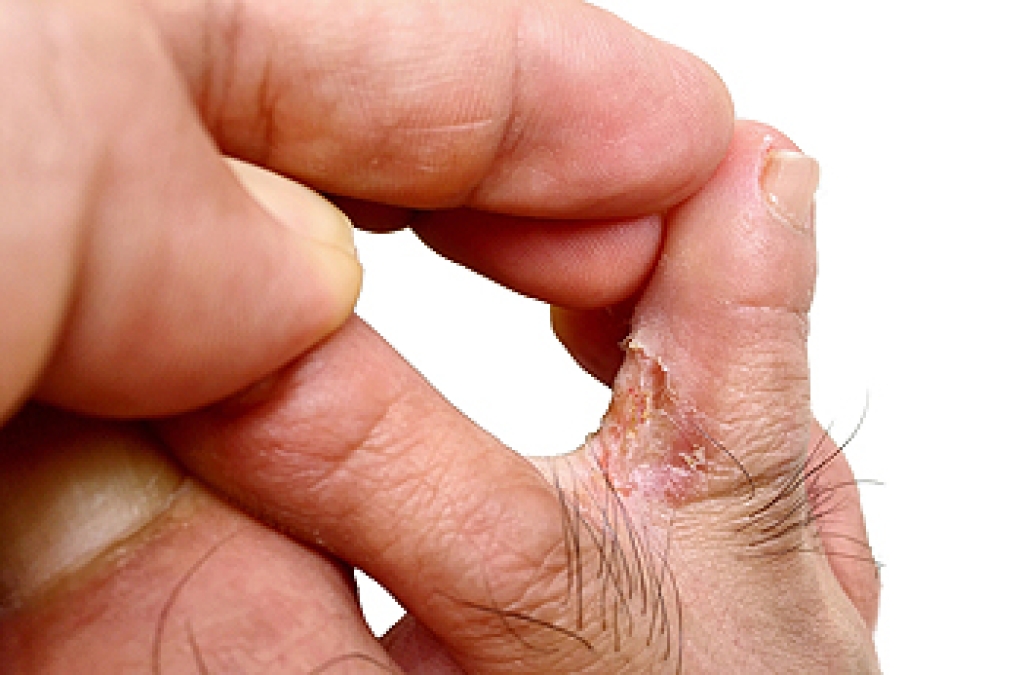
Athlete’s foot is a fungal infection that primarily affects the skin on the feet. It is caused by fungi called dermatophytes, which thrive in warm, moist environments. The infection is extremely contagious and can spread through direct contact with contaminated surfaces or items, such as floors in public showers or gym locker rooms. Symptoms of athlete’s foot include itching, redness, and scaling of the skin, often between the toes. The affected area may become dry, cracked, or blistered, leading to discomfort and sometimes pain. In more severe cases, the infection can spread to the toenails or other parts of the body. Diagnosis is typically made through a physical examination of the feet, and in some cases, a skin scraping or sample may be taken for laboratory testing to confirm the presence of the fungal infection. If you have any of the above symptoms, it is suggested that you contact a chiropodist who can offer effective relief and treatment solutions.
Athlete’s foot can be uncomfortable and unsightly. To learn more about preventing and treating this condition, please consult with one of the specialists from Thornhill Foot Clinic. Our chiropodists will assess your condition and provide you with quality foot and ankle treatment.
What Is Athlete’s Foot?
Athlete’s foot refers to an infection of the skin on the feet that is caused by a fungus. This fungus is contagious and thrives in warm and moist environments. It is often spread in common areas such as public pools, locker rooms, and showers. It can also spread when sharing personal items, like shoes or towels, with an infected person.
Symptoms
The symptoms of athlete’s foot may include:
- Itching, stinging, or burning of the skin on the feet
- Cracking or peeling skin, especially between the toes and on the soles of the feet
- Scaly, red rash on the foot
- Blisters
- Foul odor
Treatment
Treatment for athlete’s foot typically involves using over-the-counter topical antifungal medications on the feet. When over-the-counter options are ineffective, you may need to take prescription oral medications or topical antifungal drugs, or a combination of both.
Prevention
Preventing athlete’s foot places an emphasis on good foot hygiene practices.
You can prevent athlete’s foot by:
- Washing and drying your feet thoroughly every day
- Wearing shoes when walking in public areas
- Not sharing personal items, like shoes or socks, with others
- Wearing shoes and socks made out of breathable materials
If you have any questions, please feel free to contact our office located in . We offer the newest diagnostic and treatment technologies for all your foot care needs.
